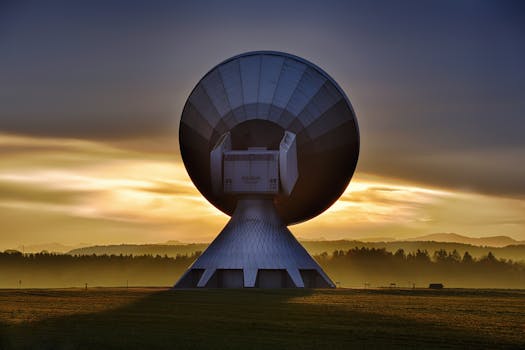
Orbiting Innovations: Key Updates in Satellite Telecommunications Technology
Satellite telecommunications technology has witnessed significant advancements in recent years, revolutionizing the way we communicate and access information globally. With the increasing demand for high-speed internet and reliable connectivity, the satellite industry has been at the forefront of innovation, pushing the boundaries of what is possible. In this article, we will delve into the key updates in satellite telecommunications technology, exploring the latest developments and their impact on the industry.
Introduction to Satellite Telecommunications
Satellite telecommunications involve the use of artificial satellites in orbit around the Earth to transmit and receive data, voice, and video signals. This technology has been around for several decades, but recent advancements have made it more accessible, efficient, and cost-effective. Satellites play a crucial role in providing connectivity to remote and underserved areas, where traditional infrastructure is limited or non-existent.
Advances in Satellite Technology
Several key updates have transformed the satellite telecommunications landscape. One of the most significant developments is the launch of high-throughput satellites (HTS), which offer faster data speeds and greater capacity than traditional satellites. HTS have enabled the widespread adoption of satellite-based broadband services, making it possible for people in remote areas to access high-speed internet. Another significant advancement is the introduction of low-Earth orbit (LEO) satellites, which operate at lower altitudes and offer lower latency and higher speeds than traditional geostationary satellites.
Additionally, the development of advanced propulsion systems has enabled satellites to maintain their position and altitude more efficiently, reducing the need for costly and complex station-keeping maneuvers. The use of electric propulsion systems, such as ion engines, has also become more prevalent, allowing satellites to extend their operational lifespan and reduce their environmental impact.
Impact on the Industry
The updates in satellite telecommunications technology have had a profound impact on the industry, enabling new applications and services that were previously unimaginable. One of the most significant effects has been the expansion of satellite-based broadband services, which have connected millions of people in remote and underserved areas to the internet. This has had a transformative impact on education, healthcare, and economic development, enabling people to access vital services and opportunities that were previously out of reach.
The advancements in satellite technology have also enabled the development of new services, such as satellite-based IoT (Internet of Things) connectivity, which is being used to monitor and manage remote assets, such as pipelines, wind turbines, and agricultural equipment. The use of satellites for IoT connectivity has also enabled the development of smart cities, where sensors and other devices can be connected to the internet, providing real-time data and insights to urban planners and managers.
Future Outlook
As the satellite industry continues to evolve, we can expect to see even more innovative developments and applications. One of the most exciting areas of research is the development of satellite-based quantum communications, which promise to provide ultra-secure and reliable connectivity for sensitive applications, such as financial transactions and military communications.
Another area of focus is the development of sustainable and environmentally friendly satellite technologies, such as the use of green propulsion systems and the design of satellites that can be easily recycled or disposed of at the end of their operational lifespan. As the satellite industry continues to grow and expand, it is essential that we prioritize sustainability and environmental responsibility, ensuring that the benefits of satellite technology are shared by all, while minimizing its impact on the environment.
